
HomePony Know HowRiding TipsFlatworkNo arena? No problem!
-
Pony Care Tips
Learn everything you need to know about caring for your fave pony. From feeding and grooming to mucking out – we have it all here!
-
Riding Tips
Improve your riding with our fab articles! Whether it's building your confidence, riding shapes, or jumping spreads that you need tips on, we have something for every rider.
Latest News
No arena? No problem!
Could hacking really boost your dressage scores? Find out here!
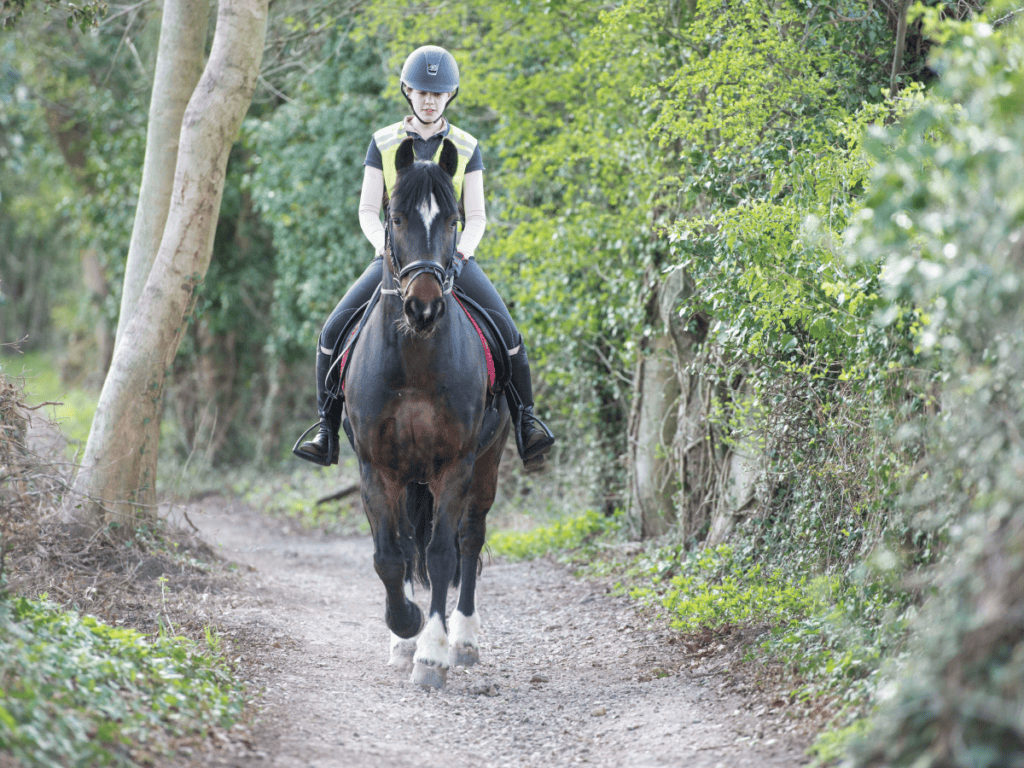
Is there anything better than a hack in the sunshine with your equine bestie? We all love a chilled-out amble around the countryside, but what if that same wander could do wonders for your pony’s way of going, too? Check out our awesome exercises to help you get the best of both worlds.
Twists amd turns
Being able to bend your pony around your leg in either direction is super-important in a dressage test. From riding into the corner to making the perfectly shaped 20m circle, your pony needs to be supple to score highly.
Practise bending him out hacking by riding shallow loops along hedge lines and even large circles if you have space. Even changing the direction of bend every few strides along the bridleway will help supple your pony up and make riding a smooth change of rein loads easier. Remember to push your outside leg slightly behind the girth and turn your shoulders towards the direction of bend to help him, as he might not quite understand what you’re after to begin with.
Did you know?
Riding on different surfaces improves your pony’s balance and builds his strength.
Top tip!
Don’t lose impulsion while you practise bending – your pony still needs to move forwards as he would in a test!
On and back
Transitions are an essential part of any dressage rider’s toolkit – you’ll have to do lots during a test and a messy one could see your marks taking a nosedive. Luckily, they’re super-easy to practise out hacking, plus they’ll keep your pony focused if he tends to get distracted when you’re out and about.
Start with transitions between paces to test how attentive he is to your aids. He should move off your leg immediately and come back as soon as you still your seat and close your fingers on the reins to ask him to slow down. The more transitions you do, the more balanced he’ll be through them. You can then focus on keeping him soft as well as quick off your aids.
Then, try some within the pace. This is a bit trickier, and you’ll need to be super-consistent with your aids so he doesn’t break into another pace. It can help to use a gentle uphill slope to practise, because your pony will naturally slow slightly when you want to collect him, as well as be less keen to make an upward transition because it’s harder work.
Top tip
Hacking often brings quieter ponies out of their shells, so if yours is slow in the arena you might find he livens up with grass under his toes.
Running up that hill
Hillwork is a really important part of every pony’s routine – it’s amazing for his strength and aerobic fitness. However, you need to do it the right way to really see benefits.
When going up a hill, focus on riding your pony from leg to hand – he should work from his hindquarters rather than pulling himself up the hill with his shoulders. Walking up hills is great conditioning work, while trotting will give his aerobic fitness a boost. Try to include a mix of both in your hacking.
On the other hand, walking down hills should encourage your pony to flex his hocks and use his core muscles to support himself. Ride in a positive rhythm with an even contact and don’t let him rush or collapse onto his forehand, because it means he’s not building any strength to help support himself.
Top tip
Practise leg-yielding and transitions up and down hills, too. If you can do them on a slope, they’ll be a piece of cake in the arena!
Stop right there
It’s a really important – but often ignored – part of a dressage test. Being able to ride an accurate, balanced, square halt will give your score a boost, and it’s easy to practise outside the arena, too.
When you ride a halt transition, make sure your pony’s straight and even in both reins. Keep your leg on to support him and hold him straight, sitting tall and stilling your seat to ask him to stop. Stand for a few seconds before moving off and give him a scratch on the wither for a job well done. Ideally, your aids should be minimal to make the halt look smooth and effortless. Even if this isn’t the case to start with, lots of practise will soon get you there. Make sure you have a go at halting from trot, too, as this is likely to be what you’re asked for in a test.
Top tip
Being able to halt and stand quietly is an essential skill for happy hacking, too. Your pony might need to wait for other bridleway users to walk past or to cross a road.
Top tip
Take care that your pony doesn’t assume a wither scratch means he can just walk off – he needs to stay still until you ask him to walk or trot on.

Side to side
You might not meet it in lower level tests, but lateral work is a great thing to get your head around early on in your dressage career. Begin with leg-yield – he’ll need to move forwards and sideways on a diagonal line, which makes him more supple and builds his strength in a way other movements can’t.
It can help to introduce leg-yield down the long side of a field or wide bridlepath so you have plenty of room but feel contained with a fence or hedge on one side. Ride a few metres from the boundary and push your leg slightly behind the girth to ask your pony to step towards it. Maintain a little bit of bend away from the direction of travel but keep a consistent feel on your outside rein so he doesn’t fall out through his shoulder.
Remember, he needs to keep moving forwards, too, so take care to keep your leg on. A handful of steps is plenty to start with, so build up gradually as he feels stronger.
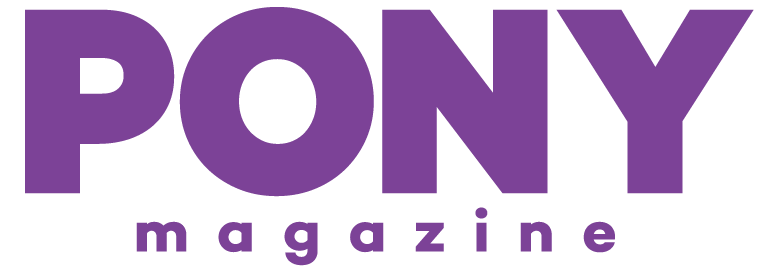

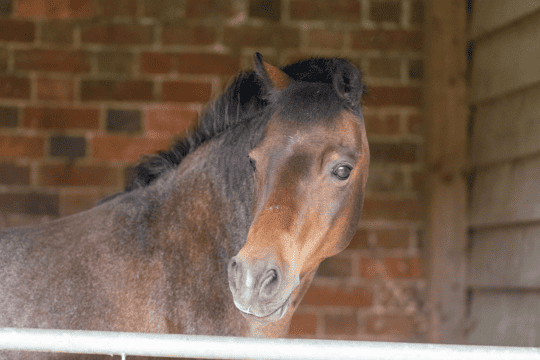
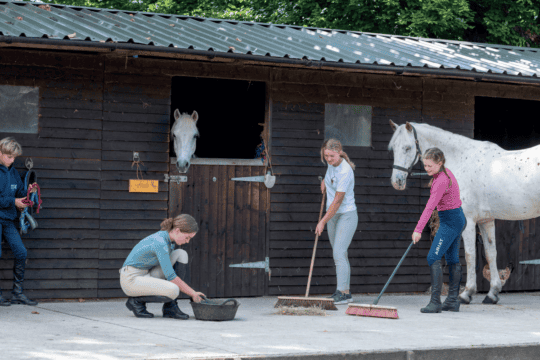
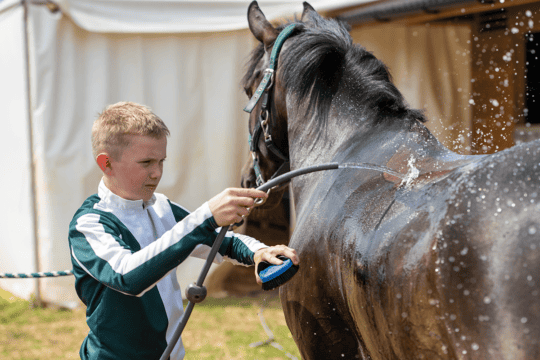
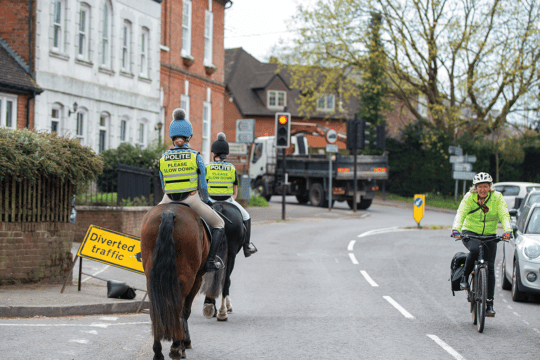








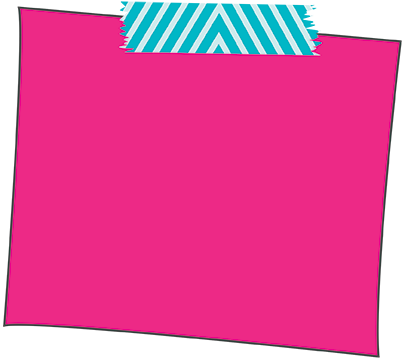







Leave a Reply
You must be logged in to post a comment.